Cannondale SuperSix Evo Ultegra review
The race worthy bike that rolls like a storm cloud beneath you
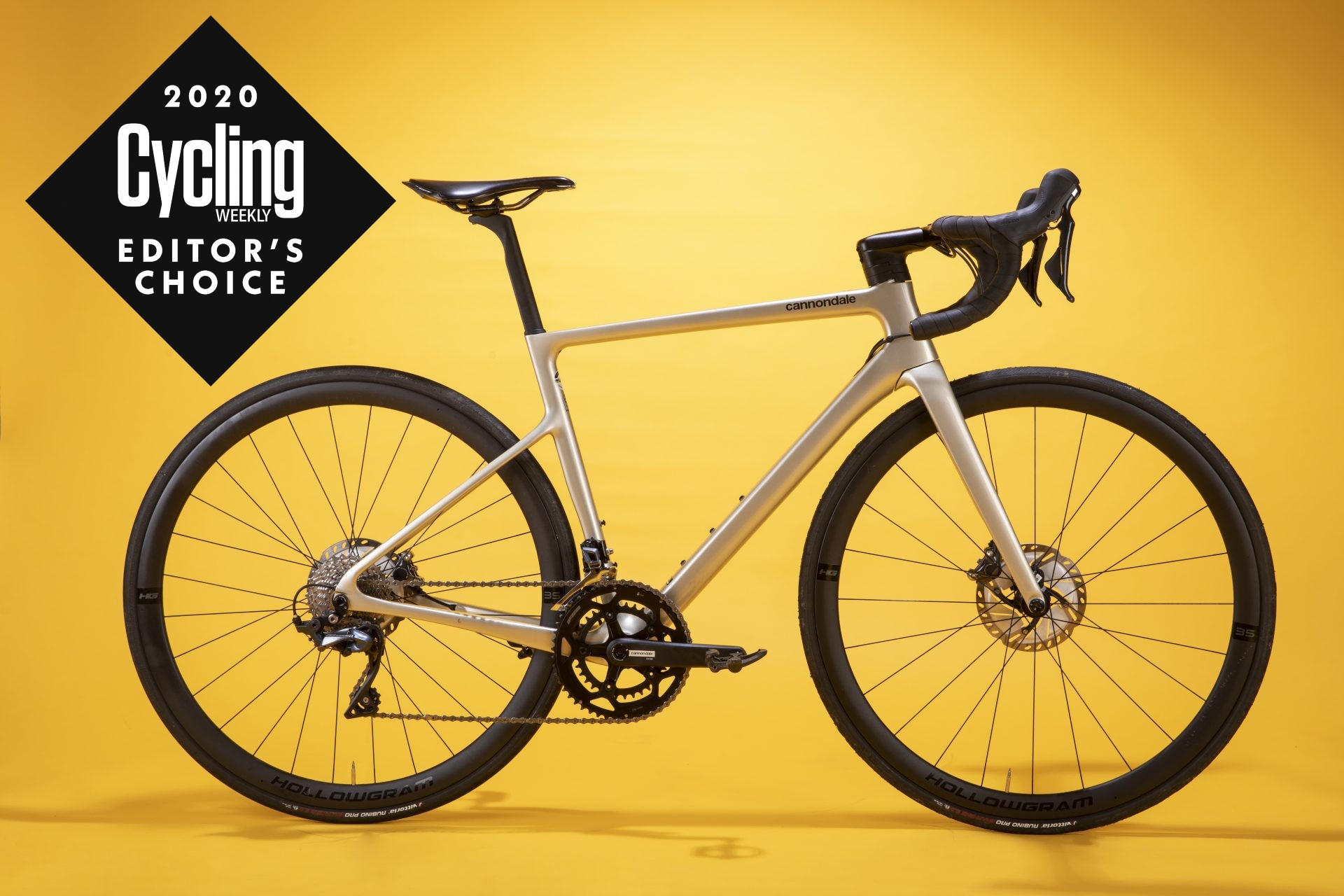
The Cannondale SuperSix Evo is a race bike that offers bucket loads of compliance. It's a bike that will suit riders who want to feel fast, without having to funnel themselves into an overly aggressive fit or sacrificing long distance comfort. How best to put this: if you like to feel rapid but you've reached an age where spine health is certainly on your radar, look no further. It's not the lightest kid on the block, and Cannondale could help this model out by speccing a higher end chainset and matching Ultegra cassette. However, it climbs well enough for an all-rounder and the aero shapes provide a grin inducing flat road injection of speed.
-
+
Incredibly comfortable for a race bike
-
+
Stable steering
-
+
Stability
-
+
Compatible with standard stem/bars
-
-
Some spec choices make it heavier than competitors
You can trust Cycling Weekly.

The Cannondale SuperSix Evo Ultegra was selected for an Editor's Choice award in 2020. This year's list contains 78 items which scored a 9 or 10/10 with our tech team - this gear is the best of the best, and has received the Cycling Weekly stamp of approval.
When a Cannondale SuperSix Evo finally arrived at the Cycling Weekly office for me to test, my levels of anticipation could only be described of as palpable. The SuperSix Evo has long held a reputation for being a gold standard race bike, yet for some reason almost a decade into my career in the industry I'd still not had the chance to swing my leg over one.
My first impression was one of complete surprise. Marketed as the GC race bike of Cannodale's stable, the SuperSix I'd bred in my mind was a smashy-thrashy-adrenaline rushing sort of machine. What I found was sublime comfort and dead certain handling with a composed air of stability. I didn't say it was a bad surprise...
Cannondale SuperSix Evo Frame
The SuperSix Evo has always been a race bike, and there's no chance of that changing any time soon. However, with Cannondale's launch of the SystemSix aero model, it has taken on a slightly more 'all-round' position.
The SuperSix Evo family is split into standard and Hi-Mod models. Entry into the Hi-Mod ranks starts at £4,400, whilst standard models begin at £2,500 with Shimano 105. The difference is the carbon used: Hi-Mod is stiffer and lighter. By comparison, the standard carbon on the model we have on test here is heavier; don't write it off though, because that comes with more compliance.
The frame shape of the entire SuperSix Evo family was dramatically altered with the launch of the 2020 models, and this 2021 SuperSix Evo carries an identical frame. Gone are the high and slender seatstays and traditional round tubes that the SuperSix was so renowned for; these have been replaced by the clinical aerodynamic shapes that every brand with access to windtunnel testing tells us is the most efficient. Cannondale claims that the truncated aerofoil shapes represent up to a 30 per cent saving in drag.

I'm all for the aesthetic of round tubes. However, the physics of the matter is that this shape is currently considered to be the fastest way to make a bike within the UCI rules, and there's no doubt about it that the SuperSix Evo feels rapid when bombing along a flat and fast road. Several other 'all round' race bikes have been optimised in their '2021' guise. The Giant TCR, Trek Emonda, BMC Teammachine and Specialized SL7 are all examples. We don't have direct comparison data on their wind cheating prowess. However, based on the frame shapes, I'd put the current SuperSix in a box with the Teammachine and Tarmac SL7 as 'all rounders', whilst the Emonda and TCR look to be more climbing focused bikes with an aero lick.
The latest race content, interviews, features, reviews and expert buying guides, direct to your inbox!
Cannondale approach things a little differently when it comes to frame design and this is most obvious in the bottom bracket shell and rear end 'SI' (System Integration). This offsets the BB and chainline by a few millimetres to create an apparently stiffer and more efficient rear end. What it does mean is whilst you can fit an aftermarket bottom bracket, you will be stuck with having to use a Cannondale chainset or Cannondale chainring and spider setup.
Geomtry wise, the SuperSix is a race bike and it comes with an aggressive geometry. However, in its current iteration, this has been toned down slightly vs previous models. My size 51 came with a stack/reach of 534mm/378mm. That's higher and shorter than the Specialized Tarmac SL7, Giant TCR, Trek Emonda and Scott Addict - to varying degrees. However, there's plenty of adjustment available via the (split) spacers - I don't see it being an issue unless you're riding one of the above slammed and with a boat tiller stem.
| Bike | Stack (mm) | Reach (mm) |
| Cannondale SuperSix Evo (51) | 534 | 378 |
| Specialized Tarmac SL7 (52) | 517* | 383 |
| Trek Emonda (52) | 533 | 383 |
| Giant TCR | 528 | 383 |
*NB has 10mm immovable spacers - so consider this 527mm
When it comes to the handling part of the equation, the SuperSix’s head angle sits at 71.2° – which is shallower than bikes in its class, and the wheelbase at 994mm is also relatively long, creating stability.
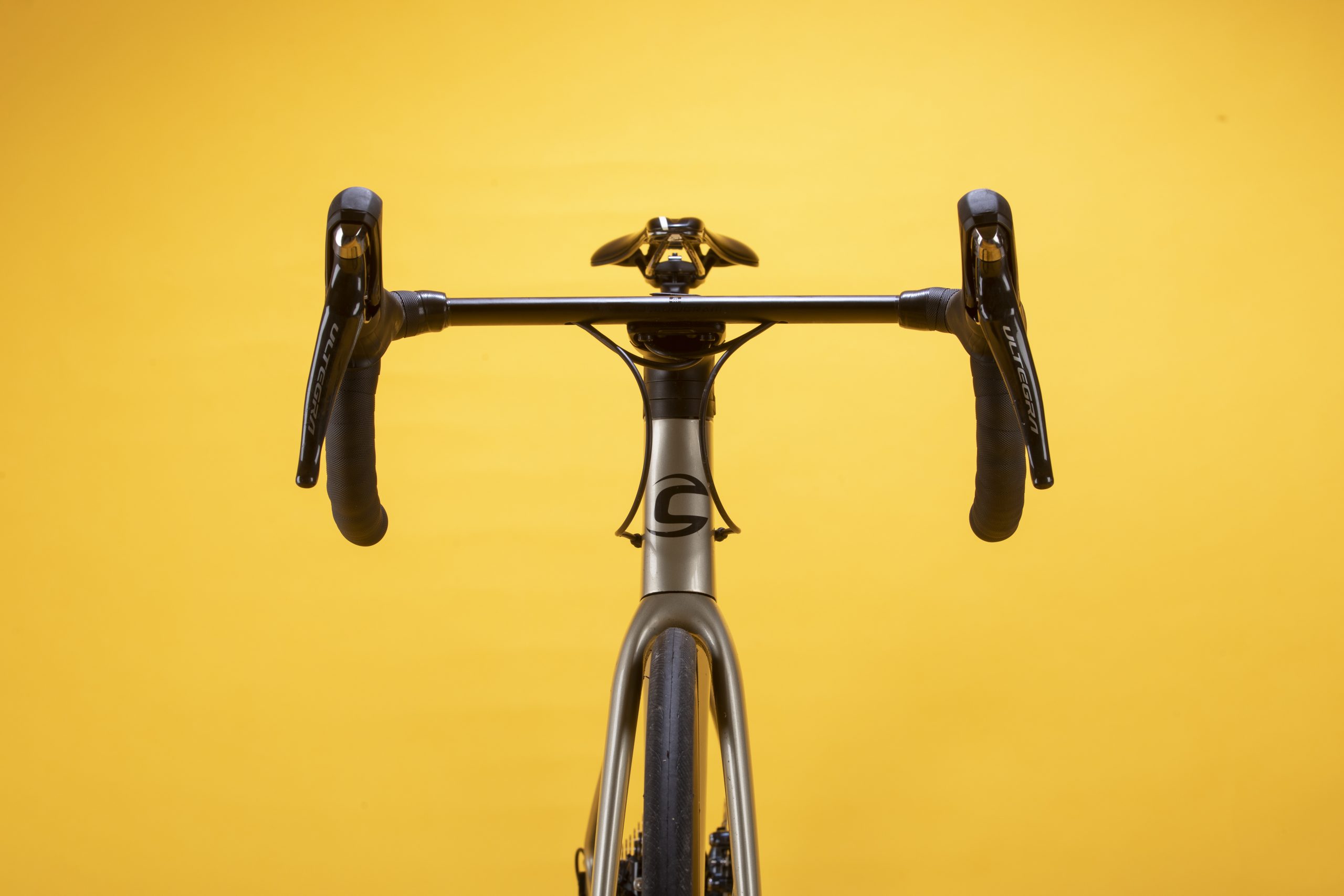
Rear end dampening compliance comes from the D shaped 'HollowGram 27 SL KNØT' carbon seatpost. This is proprietary to Cannondale, so does lock you into using the brand's equipment in the future. It's impossible to say how much of the ride quality comes from this, but the brand says that this alongside the dropped seatstays increases compliance by 18 per cent over the outgoing frame, and certainly something has made this bike ride very smoothly.
Cannondale SuperSix Evo front end and cable routing
At the front, Cannondale has its own HollowGram SAVE SystemBar. This marries with the fork seamlessly, however, it is possible to fit a standard stem and round bar if you like - a big plus as many brands move to proprietary only systems which look swish but somewhat lock you into limited choice.
The hydraulic brake cables route through the handlebar. On Di2 models, the brake cables then go through a plastic cover on top of the headtube, but in this mechanical version, they disappear into the downtube.
In order to prevent the hydraulic cables from being chewed up inside the frame (an applaudable aim), Cannondale has embedded stoppers inside the frame and fork. This restricts the angle at which you can turn the bars to about 45°. My initial reaction was to vehemently disagree with this method, my key objection was "what happens in the event of a crash?"
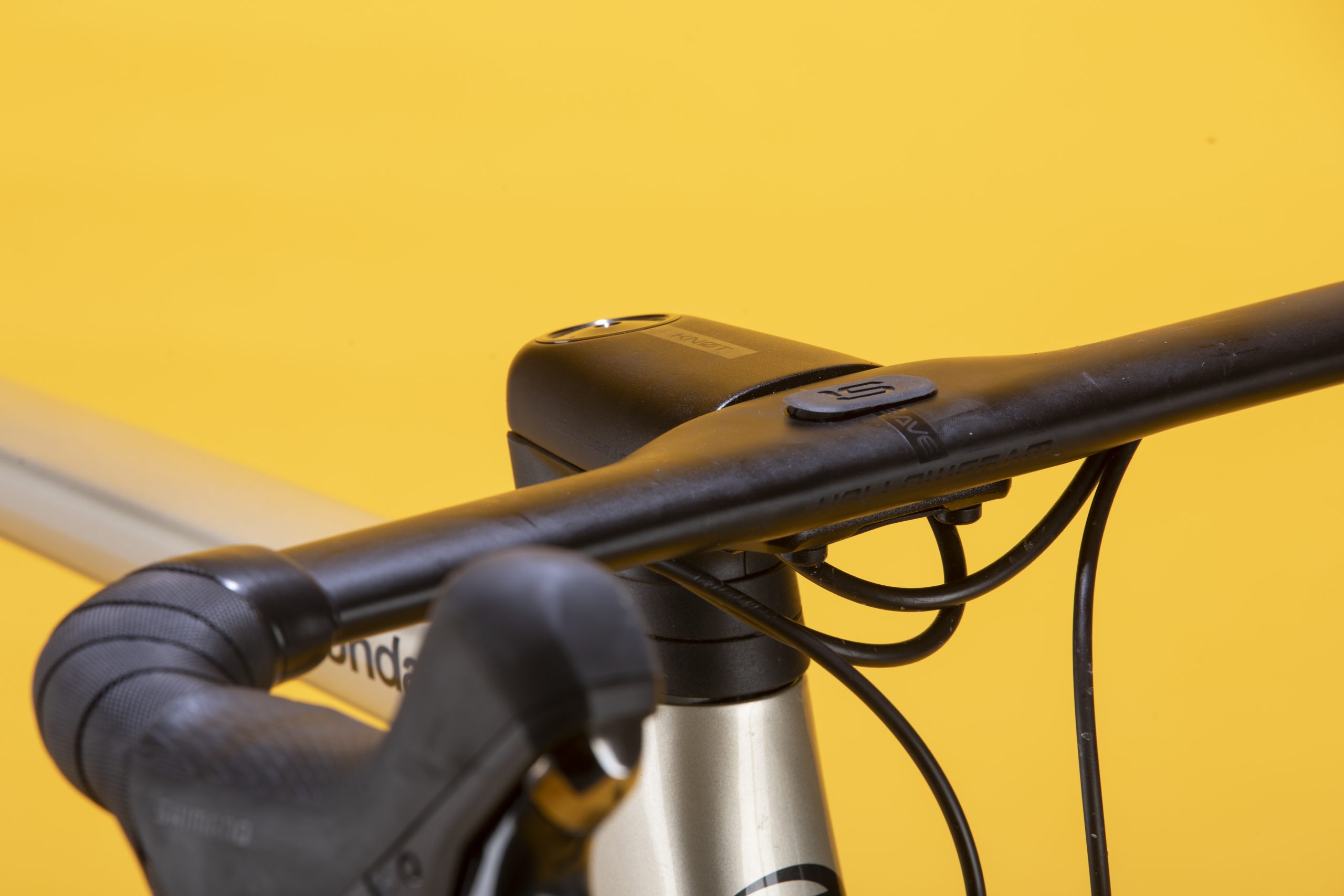
Cannondale confirmed they had had frames in for warranty, where the stopper has snapped and written off the frame. However, the stopper does prevent the bars from swinging round and smashing into the top tube. Crashes are generally not good for carbon frames, my conclusion is that this one is no more vulnerable than others. An important step to take to avoid damage in a lighter crash is to make sure you don't overtighten your stem bolts - in this case to 5nm, allowing the bars to turn under force.
There is a proprietary computer mount - my test bike didn't come with this, so I used a circular mount with rubber bands, as is my common approach for test bikes. It didn't work well, and I'd advise anyone buying this bike to fork out for the mount. Really, I think it should come supplied.
Cannondale SuperSix Evo specification
The model I have on test is a women's Ultegra mechanical spec. There's a unisex Ultegra mechanical spec that is identical aside from the handlebar width, saddle choice and gearing.
Like all of Cannondale's bikes, there's lots of the brand's own HollowGram kit specced. This includes the seatpost, bars and stem already mentioned.
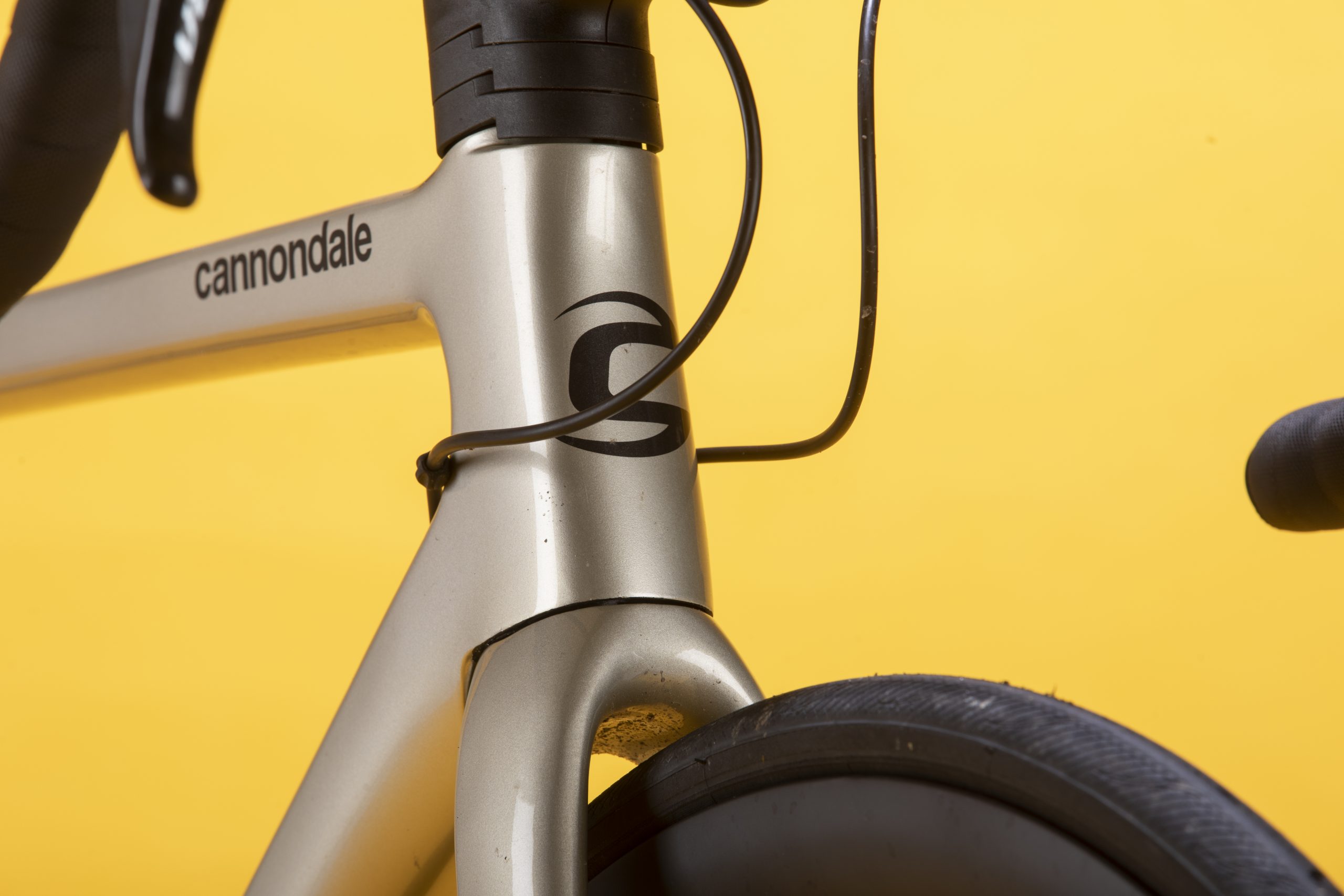
Because of the BB30a bottom bracket, Cannondale has to use its own chainsets - in this case, the Cannondale One, alongside FSA chainrings. My good friend Tim Allen over at Soigneur London bike fitting happens to have a lot of 172.5 cranksets in his store room, so compared the weight of a 52/36 chainset for me - the Cannondale One came in at 833g, vs 696g for an Ultegra and 758g for Shimano 105. Cannondale has paired this with a Shimano 105 cassette as well, which weighs in at 320g vs 292g for Ultegra. Both the crankset and cassette add to the built weight vs a 'pure' Ultegra build. That said, Cannondale's own cranksets are known for stiffness and durability, so it's not all negative there.
This women's model comes with a 50/34 chainset and 11-32 cassette - which on a race bike is a pretty wide spread of gears, probably more than necessary but it would be handy on an epic Gran Fondo sort of day out. The brakes are Ultegra hydraulic with 160mm rotors front and rear.
Cannondale has specced its own HollowGram 35 carbon rims, with Formula hubs - these perform perfectly well alongside the setup and don't feel like a candidate for upgrade. Whilst there's space for 30mm tyres, those specced are the Vittoria Rubino Pro in 25c. The Rubino carries a relatively tough looking tread, but it really surprised me - offering excellent ride quality coupled with a good degree of cornering hold.
The ride
Jumping onto the SuperSix Evo for the first time, my initial response was one of utter surprise: for a race bike, this machine is unbelievably comfortable. That isn't to say that it provides a numb, uninspiring ride, though - I felt connected to the tarmac and there was plenty of feedback on offer. Pulling myself out the saddle for short ascents, there was plenty of quick-footed acceleration.
Out on a longer club run, the compliance on offer really shone through - 120 kilometres of rough roads and rutted country lanes later and I felt fresh and ready to take on more. I tested this bike whilst nursing a short bout of backache (not uncommon in bike testers who are adjusting to a new fit every week!) and I was glad to have the cloud like ride of the SuperSix beneath me - albeit more of a fast-paced rolling storm cloud than that of a puffy summer's day, if I'm to elaborate on the somewhat tired analogy.
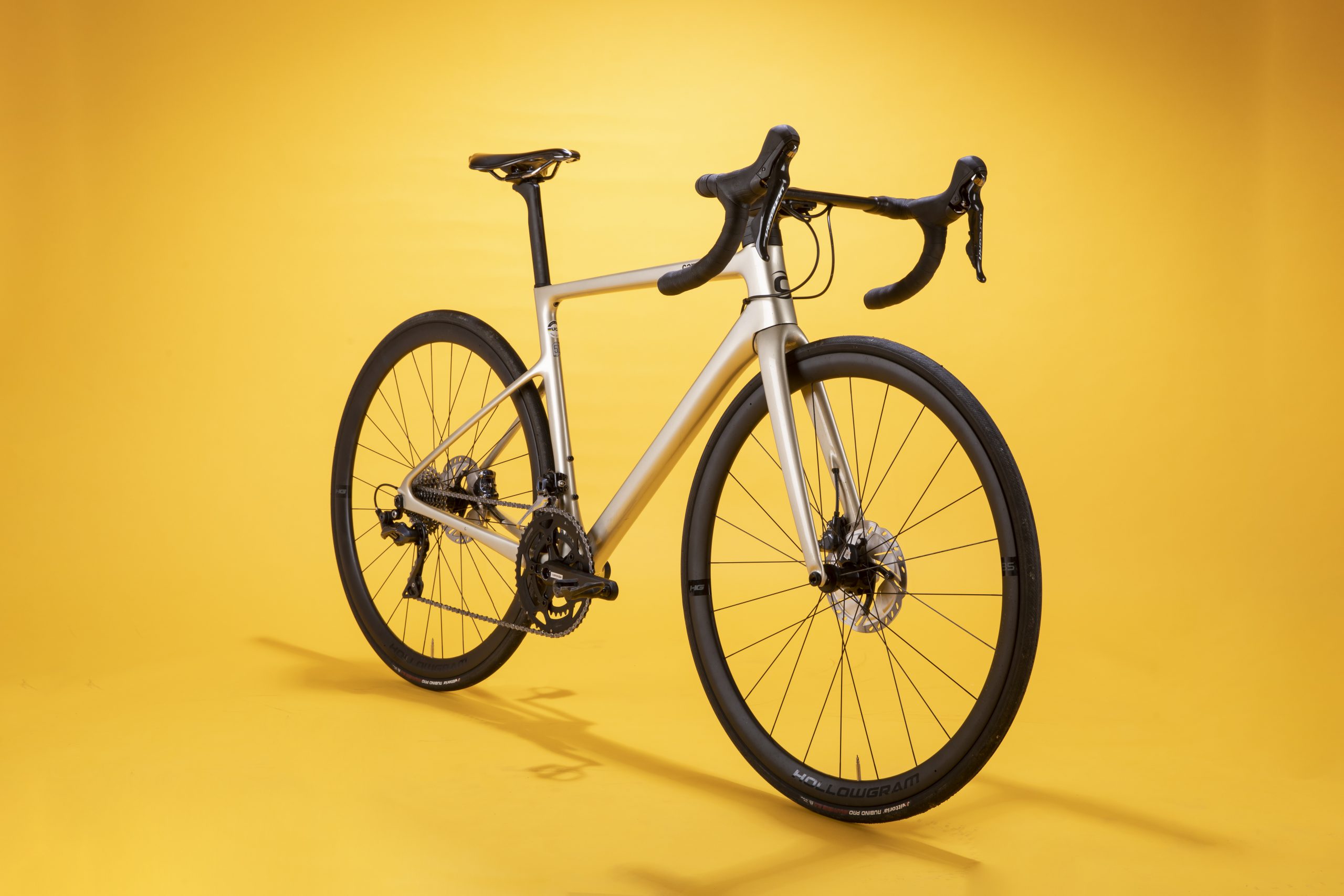
The SuperSix has always had a stellar reputation for its cornering prowess, and I'd add my voice to the applause. Whilst some race bikes take their handling expertise from feeling fast and nimble, this machine is better described as stable and reliable. Both forms of handling confidence are desirable in their own way, the SuperSix feels like a rock solid companion - and I'd put that down to the mixture of slacker head angle than most paired with a still short wheelbase.
At 7.9kg, there are lighter bikes in this price range - the Giant TCR Ultegra is a good example at 7.2kg (size 54). However, it's within range of most competitors - a similarly specced BMC Teammachine comes in at 7.7kgm, ditto the Canyon Ultimate whilst the Trek Émonda SL 6 Pro - which claims to be a climbing specialist - is also 7.9kg (albeit in a bigger size 56 but the difference will be marginal).
Cannondale could certainly drop a few grams with a chainset and cassette update, however, a lot of it will be down to some of the aero additions - like the handlebar, stem and relatively chunky seatpost. These extra grams didn't do enough damage on the hills for me to want to swap them out to save weight, and on the flats they absolutely added up to a blisteringly fast ride. Even pushing into a roaring headwind I felt like I was getting a move on, and when tailwinds pushed me from behind, the SuperSix was effortlessly fast.
Value
The SuperSix Evo Ultegra mechanical comes in at £3,500. Its spec sheet is comparable to the Giant TCR Ultegra, at £3,799 and the Émonda SL 6 Pro at £3,350; from Specialized you'd be looking at the older frame of the Tarmac SL6 for £3,200.
The TCR and Emonda have both had updated for 2021, making them newer, fresher and in theory more technologically advanced models. However, both are more focused specifically on climbing whilst the SuperSix feels like much more of an all-rounder.
Take a step up to the hi-mod ranks (where an Ultegra build costs £4,400), and you'll drop a few grams and get greater stiffness from the frame. However, comfort is underrated - so think carefully about what you want from a bike, first.
Michelle Arthurs-Brennan the Editor of Cycling Weekly website. An NCTJ qualified traditional journalist by trade, Michelle began her career working for local newspapers. She's worked within the cycling industry since 2012, and joined the Cycling Weekly team in 2017, having previously been Editor at Total Women's Cycling. Prior to welcoming her first daughter in 2022, Michelle raced on the road, track, and in time trials, and still rides as much as she can - albeit a fair proportion indoors, for now.
Michelle is on maternity leave from April 2025 until spring 2026.
